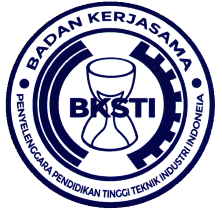Pengembangan Model Economic Production Quantity Mengakomodasi Continue dan Discrete Demand serta Kebijakan Rework Secara Simultan
DOI:
https://doi.org/10.52759/inventory.v1i1.18Keywords:
EPQ, Continue demand, Discrete demand, ReworkAbstract
Inventory of finished goods needs to be planned and controlled regularly. Fulfilling customer demand whenever and wherever is the main purpose of the supply. This issue is related to production activities. Many companies use the Economic Production Quantity (EPQ) Model in determining the size of their lot productions. This model is able to show how to minimize total production costs by reducing inventory costs. Customer behavior at PT XYZ makes product delivery divided into 2 types. The first type, finished goods is sent continuously in small amounts called continue demand. The second type, products is sent between certain time intervals in large quantities called discrete demand. Basic EPQ Model’s parameters do not accommodate a system like this. In addition, PT XYZ requires rework for products that do not pass the quality test. Therefore, this research was developed to formulate EPQ model that can accommodate two types of demand, continue and discrete, as well as the existence of rework policy. This study tries to provide another approach in solving the derivation problem using the "Arithmetic-Geometric Mean" method. The results of this study will display a mathematical formulation to find the optimal production cycle time for PT XYZ. Numerical examples are discussed to show practical models.
Downloads
References
Ballou, H. Ronald. (1992). Business Logistics Management.(Ed. 3). Prentice-Hall, Inc : New Jersey
Beheshti, H. Hooshang. (2009). A Decision Support System for Improving Performance of Inventory Management in a Supply Chain Network. International Journal of Productivity and Performance Management. 59(15), 432-467
Junger, Micheal dan Naddef Denis. (Ed.). (2001). Computational Combinatorial Optimization: Optimal or Provably Near-Optimal Solution. Springer : Berlin
Sipper, Daniel dan Bulfin, Robert. (1997). Production : Planning, Control, and Integration. McGraw-Hill: USA
Eynan. (2003). The Benefit of Flexible Production Rates in the Economic Lot Scheduling Problem. IIE Transaction. 35 (7), 1057-1064
Chiu, P.Y., Lin, K.C., Chang, H., Chiu, V. (2010). Mathematical Modelling for Determining Economic Batch Size and Optimal Number of
Deliveries for EPQ Model with Quality Assurance. Mathematical and Computer Modelling of Dynamical System. 16 (4), 373-388
Kostic, Konstantin. (2007). Inventory Control as a Discrete System Control for the Fixed-Order Quantity System. Applied Mathematical Modelling.33, 4201 – 4214
Maity, A.K., Maity, K., Mondal, S., dan Maiti, M. (2007). A Chebyshev Approximation For Solving The Optimal Production Inventory Problem of Deteriorating Multi-Item. Mathematical and Computer Modelling. 45, 149-161
Chiu, S.W., Gong, D.C., Chiu, C.L., Chung, C.L. (2011). Joint Determination of The Production Lot Size and Number of Shipment for EPQ Model with Rework. Mathematical and Computational Applications. 16 (2), 317 – 328
Oktavia, N., Henmaidi, Jonrinaldi. (2016). Pengembangan Model Economic Production Quantity (EPQ) dengan Sinkronisasi Demand Kontinu dan Diskrit Secara Simultan. Jurnal Optimasi Sistem Industri. 15 (1), 78-86
Chen, Kuang-Ku dan Chiu, Singa Wang. (2011). Replenishment Lot Size and Number of Shipments for EPQ Model Derived Without Derivatives. Mathematical and Computational Applications. 16 (3), 753-760




